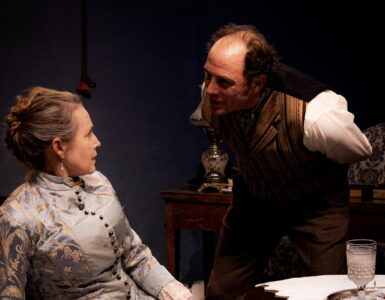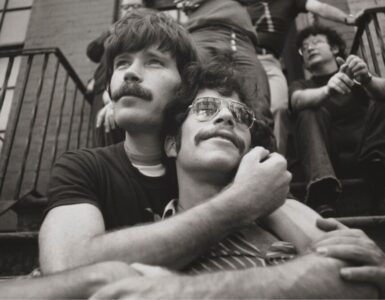
***
Have you ever heard your heartbeat? Not just echoing dully through a doctor”™s slender stethoscope, but pulsing and reverberating throughout the room? Innovative Japanese artist Sasaki puts your heartbeat through an amplifier and then he puts it on paper. The result is a striking and intensely personal work of art, unlike anything you”™ve seen before.
Review by Pauline Adamek
Since 1995 Sasaki has devoted himself to an ongoing art and performance project, documenting the most elementary proof of life – our heartbeats. Having taken up residence at countless art museums throughout Japan, this single-minded creator hooks his subjects up to a pulse monitor in order to create portraits of the waves of the beating, pumping living heart. The more subjects he has, the deeper and more layered the portraits become, as the vivid red ink (representing life”™s blood) overlap in waves and waves of a visual depiction of the metronome of life.
The purpose of Sasaki”™s work is powerful and pure; to demonstrate and remind us how people are connected through the commonality of blood and a beating heart. By capturing this rhythm in real time and inscribing its presence, Sasaki gives definition to the intangible and captures the elusive.

***
After visiting Shanghai at the end of 1994, and experiencing the tremendous energy generated by the chaos of the city, Sasaki wrote, “I felt as if I could actually see the heartbeats of the vast crowds, everyone putting all their energy into living in this city.”
It was this profound experience that formed the basis of his heartbeat drawings that the artist refers to as his Life Work.
How does Sasaki compose a Heartbeat Portrait?
Firstly, a pulse monitor is attached to the finger of the participant, and the measured signal is outputted as real time (live) audio through a set of speakers. Immediately, the sound and rhythm of your own beating heart starts echoing throughout the space. What was once virtually silent and private is now public and shared.
In response to this amplified rhythm, Sasaki draws the image of heartbeat waves for a period of three minutes. Clad in a silver suit and wielding an airbrush loaded with red ink, he draws the pulsing of the heart as he hears it, rendering it as a continuous trail of waves, pulses and peaks on walls or paper.
With this wholly unique opportunity, participants experience the sound and rhythm of their own heartbeat while watching it brought to life visually by being rendered as a Heartbeat Drawing by Sasaki.
Afterwards, the participant signs his or her own Heartbeat Drawing. In this way, the Heartbeat Drawing becomes proof of each person”™s living being and come to form a collective Heartbeat-Portraits.
For those of you skeptics who believe critics have no heart, I offer tangible proof of mine! >>>>>

***
Go here if you want to see how he did it!
In one exhibition and marathon performance, Sasaki documented the heartbeats of over a hundred visitors. Over the course of six days, he drew three minute “˜Heartbeat Portraits”™ during a workshop in Chiyoda, Tokyo, until he had a multi-layered result.
Artist”™s Statement:
Sasaki, “This is a way that people from all over the world can purely feel their “˜living”™. This is… to feel “˜heartbeat”™. This is an artwork of ripples that Sasaki feels the rhythm of a real time heart beating of the participants by putting a sensor on their fingertips. This Heartbeat Drawing is a “˜connect”™ with all the visitors”™ proof of living.
Now based in Los Angeles, Sasaki has been invited to participate in this year”™s prestigious The 54th International Art Exhibition of the Venice Biennale, being held in Italy, from June 4th until November 27th, 2011.
Sasaki”™s home page
Daily blog






~
Thank you for your coming on last Tuesday.
I read your writing. It is so nice! and I am very glad.
then, I want to say this to you, “Thank you for your understanding about Heartbeat Drawing!”
I’ll contact you soon.
Warmest regards,
SASAKI
[…] can read my review of the project here. In the meantime, please enjoy our interview. Video produced and hosted by Pauline Adamek, edited […]